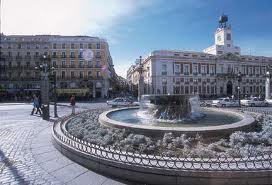Museums in Madrid

Madrid: the capital of the Spanish-speaking world, a city of over 4 million people and the primary centre of cultural influence to close to 500 million people. There is so much to say about Madrid, so much to do in the one city in the West where the the old and trite claim of never sleeping can truly, effortlessly, be upheld. Every night. Night after night. Madrid boasts a plethora of mundane pleasures readily at hand for anyone who looks for them: good weather, good food, long days and correspondingly comfortable habits that make life in the city a daily joy.
But outside the realm of la marcha (its nightlife), Madrid has a world of culture to offer. From the Museo del Prado to the Santiago Bernabeu museum, the city has a world-class infrastructure in a wide spectrum of cultural disciplines that would keep anyone satisfied: from the most demanding intellectualism to the most pedestrian expression of the word 'culture', if you pick up a Madrid city guide you are certain to find something for you.
Undoubtedly, however, the outstanding feature of the cultural scene in the capital comes from the artistic quarter. Commonly known as 'the triangle of art, or the golden triangle' (El triángulo del arte, or el triángulo de oro), the Museo del Prado, the Museo Thyssen-Bornemisza and the Museo Reina Sofía are all within walking distance of each other, just a few minutes away from the wonderful Parque del Buen Retiro, and literally around the corner from the staggering Botanical Garden.
Home to the national art collection, El Prado counts among the most prestigious museums in the world. Predictably, the most impressive feature of the collection corresponds to the exhaustive catalogue of Spanish painting that is displayed within the premises. Famous worldwide are Velázquez's masterpieces and Goya's 'Black Paintings', both of which constitute prominent portions of the museum's main attractions. However, upon closer look, the extraordinary samples of Spanish tenebrism, from Ribera to Zurbarán, together with the unique use of colour in El Greco's paintings, the boisterous baroque style of Esteban Murillo or the clear sensibility of Fortuny's representations, are even more impressive than the same overexposed masterpieces of old.

Similarly, the Thyssen-Bornemisza is a unique space in Europe, not only due to the size and quality of its collection, but also because the legacy of the private collection of a single family represents one of the last samples of its kind. Conceived as a comprehensive collection, encyclopedic in nature, that would map the history of European art from the Middle Ages, the Thyssen-Bornemisza complements beautifully the stock displayed at the Museo del Prado with northern European pieces that could not be seen elsewhere in spain. Furthermore, among the permanent collection of the museum can be found the most sophisticated selection of American artists from the XIX century this side of the Atlantic.
The Museo Reina Sofia, on the other hand, is a monumental space dedicated to contemporary art, where all sorts of avant-garde initiatives are put forward hand in hand with some of the all-time great pieces of art, such as Picasso's Guernica. Constituted in the 1950s, the Reina Sofía was moved to its current location in 1992. Although the museum has been appointed to display the works of art pertaining to the national collection and dating from 1881 to date, a recent reorganisation of the space has emphasised the institutions focus on contemporary art and the latest practices in exhibition strategies. Therefore, while many of the works displayed at the Reina Sofia are 100 years old, the museum always conveys a welcome air of freshness to its visitors, so if you are taking one of those Spanish courses in Madrid, be sure to pay the museum a visit!.
These are simply the three big names when it comes to museums in Madrid. Added to this list, there is a wide array of art museums dedicated to individual artists in the city. Among them the Museo Sorolla features prominently, as does the Museo El Greco, not strictly speaking in Madrid, but just half an hour away, in the neighbouring city of Toledo. Additionally, there are more chronological institutions, which take a look at the tendencies prevalent during a specific period of time, such as the Romanticism Museum.
If you are interested in the city, you should not miss the Archeological Museum, with its lovely selection of pieces from the times of the Gothic settlement.
Here is a selection of the best museums in Madrid!



